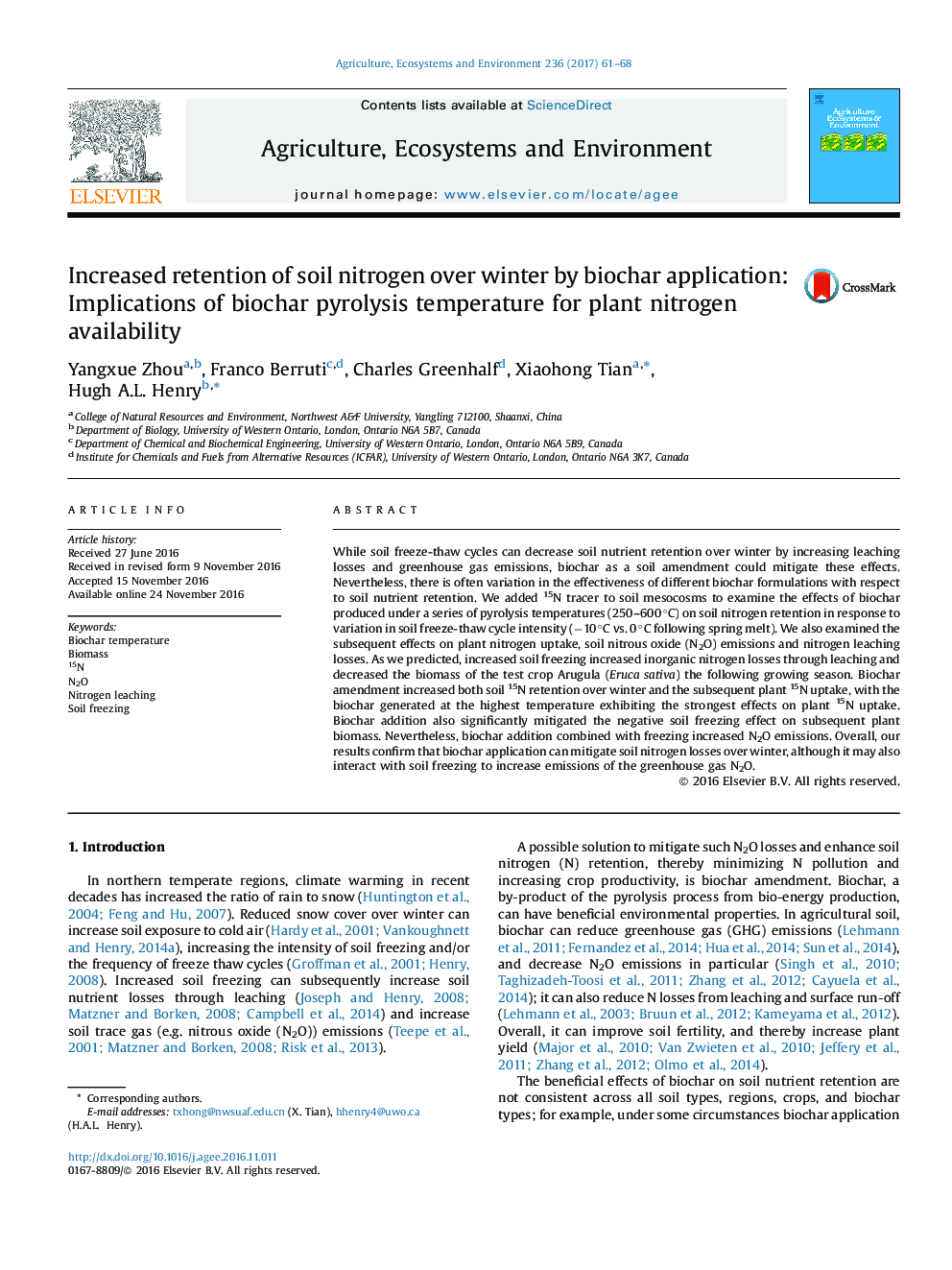| Article ID | Journal | Published Year | Pages | File Type |
|---|---|---|---|---|
| 5537876 | Agriculture, Ecosystems & Environment | 2017 | 8 Pages |
â¢Biochar amendment can mitigate soil nitrogen losses over winter.â¢High pyrolysis temperature biochar is the most effective for N retention.â¢Soil freezing and biochar can interact to increase N2O emissions at melt.
While soil freeze-thaw cycles can decrease soil nutrient retention over winter by increasing leaching losses and greenhouse gas emissions, biochar as a soil amendment could mitigate these effects. Nevertheless, there is often variation in the effectiveness of different biochar formulations with respect to soil nutrient retention. We added 15N tracer to soil mesocosms to examine the effects of biochar produced under a series of pyrolysis temperatures (250-600 °C) on soil nitrogen retention in response to variation in soil freeze-thaw cycle intensity (â10 °C vs. 0 °C following spring melt). We also examined the subsequent effects on plant nitrogen uptake, soil nitrous oxide (N2O) emissions and nitrogen leaching losses. As we predicted, increased soil freezing increased inorganic nitrogen losses through leaching and decreased the biomass of the test crop Arugula (Eruca sativa) the following growing season. Biochar amendment increased both soil 15N retention over winter and the subsequent plant 15N uptake, with the biochar generated at the highest temperature exhibiting the strongest effects on plant 15N uptake. Biochar addition also significantly mitigated the negative soil freezing effect on subsequent plant biomass. Nevertheless, biochar addition combined with freezing increased N2O emissions. Overall, our results confirm that biochar application can mitigate soil nitrogen losses over winter, although it may also interact with soil freezing to increase emissions of the greenhouse gas N2O.
